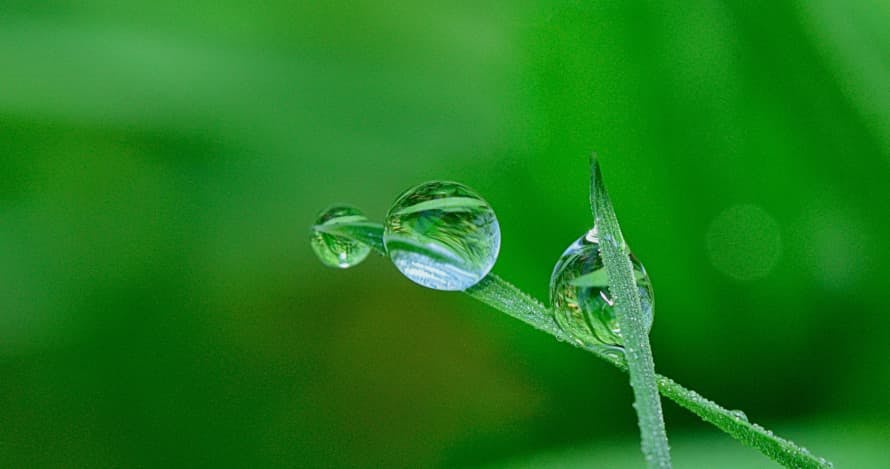
What are the 3 Pillars of Corporate Sustainability?
In this article, we'll explore what the 3 pillars of corporate responsibility are, why they're important, and how businesses can turn them into practical action.
ESG / CSR
Industries



There are a lot of proactive methods being used in today’s world, thanks to advancements in technology, to help fight against climate change – one of these tactics being environmental monitoring.
Environmental monitoring is a method which makes use of various tools to take note of the environment’s current state, and can prove valuable for any entity seeking to closely monitor how their actions impact the environment.
What is environmental monitoring, why is it important in the midst of climate change, and how can you and your company seek to implement better environmental monitoring practices into your business?
Environmental monitoring refers to the tools and techniques designed to observe an environment, characterize its quality, and establish environmental parameters, for the purpose of accurately quantifying the impact an activity has on an environment. Results are gathered, analyzed statistically, and then published in a risk assessment and environmental monitoring and impact assessment report.
👉 Think of environmental monitoring as a student taking a pop quiz in class after a reading assessment. Without warning or preparation, the quiz will reveal how well the student is currently retaining the material being learned in class. Environmental monitoring works in the same way, but in a more in-depth manner – and provides a more detailed assessment of the current state of the environment.
The main goal of environmental monitoring is to determine the current state of the environment: such as the quality of the air, water, soil, and surrounding biodiversity. In order to better understand the current environmental circumstances, one of the main objectives of environmental monitoring is to collect data which can be used to predict trends over time – which ultimately can help policy makers, scientists, stakeholders, and researchers make better decisions in their line of work in the future as we all learn to alter our lifestyles to climate change.
👉 Environmental monitoring is important in today’s society as it helps us to adjust our actions accordingly to reduce our environmental impact.

There are three main ways of conducting environmental monitoring: soil, atmosphere, and water. These methods of environmental monitoring make use of techniques such as electrostatic samples, sedimentation, condensation, and composite sampling. The data collected from these models of environmental monitoring are then input into a database management system, otherwise known as a DBMS, in order to analyze the information collected and allow for better decision making.
Here are the three main types of environmental monitoring:
👉 Other forms of environmental monitoring include erosion monitoring, contamination monitoring, and salinity monitoring.

There are multiple benefits for those who choose to partake in environmental monitoring. For instance, one of the most evident benefits of environmental monitoring is that it helps to provide a detailed assessment of the current environmental quality: such as the air, water, and soil. All of this data can help to determine where pollution may be occuring and originating from and if current environmental standards are being fulfilled.
In the midst of climate change, it can be difficult to predict the future impact of our actions on the environment – but environmental monitoring can help make the subsequent events easier to understand. This is because environmental monitoring can detect changes and trends, and with this benefit of being able to foreshadow future environmental circumstances – people in various industries (governments, businesses) can make decisions accordingly. Therefore, environmental monitoring can help provide people with information they otherwise wouldn’t have, and prevent even more catastrophic scenarios.
In fact, environmental monitoring even makes use of early warning systems that can help areas to prepare for upcoming natural disasters. Being able to monitor these environmental circumstances ahead of time can help to lessen the potential impact of these events, and even encourage new actions to be implemented to mitigate the upcoming side-effects of things like pollution levels or an unhealthy ecosystem on the human population.
Lastly, environmental monitoring can help us to conserve and protect biodiversity – which has a direct impact on climate change itself. Environmental monitoring can help with this as it is able to assist in tracking species and habitat conditions; both of which can help policymakers, stakeholders, and other entities create a prioritized list of which actions are most pivotal to take first for the sake of conserving the environment.
All in all, environmental monitoring can provide concise data that can help various entities to make better decisions, which overall help to promote sustainability and protect our planet. However, that being said, it isn’t always easy to implement environmental monitoring.

Environmental monitoring can be useful for businesses, policymakers, and stakeholders – but those seeking to implement the use of environmental monitoring should remain cognizant of the difficulties to be had.
Here are a few challenges of environmental monitoring:
👉 Environmental monitoring could prove stressful for some, as it requires intensive time, money, and dedication on behalf of multiple parties – but the benefits can outweigh the challenges in the long run.

The advantages of environmental monitoring are clear: it can help to improve society, as it serves as a proactive measure to keep the environment safe and the world informed on how our actions impact the planet as climate change progresses. Therefore, many companies may seek to implement environmental monitoring into their business – but aren’t sure where to start.
In order to successfully implement environmental monitoring within your company, careful consideration and thoughtful effort will be required – but it doesn’t mean environmental monitoring is impossible.
First off, it is important for companies looking to implement environmental monitoring to closely identify their goals with environmental monitoring – such as which data points would be most beneficial to collect regarding their business. For example, a company nearby a water source may want to monitor the nearby river or lake to determine their environmental impact.
Once the areas of most importance have been determined, your company can conduct a baseline assessment to better understand the starting point for which future environmental data from environmental monitoring should be measured. Moving forward, companies should determine which types of environmental monitoring will prove most effective to provide them with the proper data to make better decisions in the future. In order to do this, companies should set aside funds to acquire the necessary tools and technology to conduct their chosen type of environmental monitoring.
Like most things in life, environmental monitoring is done best when the effort is made to collect environmental data on a consistent basis. Companies looking to implement environmental monitoring into their business practices should seek to create a consistent schedule to ensure the data to be collected will remain recent, informative, and useful.
Drafting reports to share the results of environmental monitoring is also a beneficial practice for any business seeking to increase their transparency and sustainability – which is very likely for companies choosing to adopt environmental monitoring practices.
👉 One of the most imperative parts to practicing successful environmental monitoring is to ensure your company maintains a consistent effort to collect, analyze, and understand the data gathered – which should translate into more ethically responsible business decisions and practices.
Ultimately, environmental monitoring can serve as a vital resource to keep tabs on how our current actions will continue to impact the environment in the future. Climate change will continue to be an ongoing predicament in our world in the near future, and as the population continues to skyrocket and human activities continue to have an impact on the environment – environmental monitoring can serve as an appropriate, proactive method to protect the future vitality of our planet.
If reading this article on our guide to environmental monitoring has made you interested in reducing your carbon emissions to further fight against climate change – Greenly can help you!
It can be difficult to know where to start when it comes to environmental monitoring and general carbon accounting, but don’t worry – Greenly is here to help you and your business manage your supply chain and many other environmentally friendly criteria. Book a demo with one of our specialists to learn more.
Greenly can help you make an environmental change for the better, starting with a carbon footprint assessment to know how much carbon emissions your company produces.